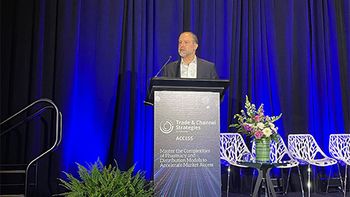
- Pharmaceutical Commerce - January/February 2009
Pharma 2020: Marketing the Future
In the 1990s, most of the medicines Pharma made were primary-care therapies for diseases afflicting large patient populations, such as hypertension, diabetes, high cholesterol and depression. But genomics, proteomics and metabolomics are providing new tools with which to develop larger molecules that more closely mimic naturally occurring molecules in the human body. At least 400 of the 2,000-odd treatments currently in development are biologicals or protein-based compounds.
Yet, although specialist medicines hold huge clinical and commercial promise, they come with one major drawback: their charging profile. Tufts Center for the Study of Drug Development estimates that the cost of developing a new biological is about $1.2 billion, nearly $400 million more than the average for a small molecule. But specialist therapies are currently used to treat conditions that affect only 3% of the general population. A company that develops a specialist medicine must therefore amortize its investment (including the money it spends on marketing and sales) over a much smaller number of patients.
So it is not surprising that specialist therapies often sell for many thousands of dollars. Nor is it surprising that healthcare payers everywhere are taking steps to slow down their utilization. If demand for such products were to grow at current rates, the global market for specialist therapies alone would be worth about $1.4 trillion by 2020, double the $712 billion the entire prescription products market was worth in 2007.
The shift towards specialist therapies is thus accentuating the need to develop healthcare packages that have value in the eyes of payers, providers and patients, not just those of the executives that have backed them. But though most pharmaceutical firms have recognized the potential of specialist medicines, they continue to use a marketing and sales model that was designed to promote primary-care products for mass-market consumption.
In fact, specialist therapies have a number of unique features that differentiate them from conventional medicines and mean that they must be marketed quite differently. First, they typically have a broader range of activity and greater potential to generate an immune response. They are also prescribed by specialists rather than general practitioners. So, anyone who is marketing such medicines must possess considerable scientific knowledge . . .
Second, since specialist therapies cost such a lot, they attract far more scrutiny before being approved for reimbursement — and reimbursement is crucial, because few patients can afford to pay for them out of their own pockets. This trend will increase with the proliferation of more sophisticated pharmacoeconomic models . . .
Third, many specialist therapies are used to treat patients with specific disease subtypes, so they must be accompanied by a diagnostic. And, since they are more difficult to get to the target site, they must generally be delivered by injection or infusion. Many such therapies must therefore be administered by a doctor or nurse but, even when patients can administer their own medicines, they usually require intensive patient education and monitoring, especially in the early stages of treatment.
This not only adds to the overall cost of using specialist therapies, it also means that different payment centers (and reimbursement procedures) may be involved. In the US, for example, specialist treatments are often reimbursed under a healthcare payer’s medical benefit rather than its pharmaceutical budget . . .
Lastly, many specialist treatments must be ordered as necessary, rather than kept in stock — partly because they are so expensive and to some extent because they have relatively short shelf lives. They must also be transported and stored with much greater care than small molecules, since they are much more fragile. Both these factors have considerable implications for the supply chain. The ability to “make to order” requires the integration of a company’s demand management with its manufacturing, packaging and distribution processes – changes that will necessitate a substantial capital investment in new skills and supply chain systems.
Therefore, any pharmaceutical company that wants to sell specialist therapies will have to develop a comprehensive marketing and sales strategy that is tailored to the distinctive characteristics of such products. It will have, among other things, to offer complementary diagnostics and support services; to appoint a smaller, smarter sales force capable of engaging with powerful healthcare payers and medical specialists; to build a responsive direct distribution network; and to invest much more effort in educating patients.
Excerpted from “Pharma 2020: Marketing the Future,” the third in a series of papers on the future of the pharmaceutical industry published by PricewaterhouseCoopers.
ABOUT THE AUTHOR
> Anthony Farino is U.S. Pharmaceutical and Life Sciences Advisory Services Leader at PricewaterhouseCoopers. He can be reached at [email protected].
Articles in this issue
over 16 years ago
Closing The Circle On Patient Adherenceover 16 years ago
3PLs Rise in Forward-Thinking Supply Chain Modelsover 16 years ago
A Pitched Battle in Cardiovascular Drug Marketingover 16 years ago
Wyeth Loses Supreme Court Case Over 'Implied' Pre-Emptionover 16 years ago
Syringe Design Gets a Makeoverover 16 years ago
Refinements in Cold Chain Secondary Packagingover 16 years ago
Inmar Rebrands Reverse-Logistics and Related Business Unitsover 16 years ago
The Packaging Contribution to Patient Adherenceover 16 years ago
Moving the Dial on Patient AdherenceNewsletter
Stay ahead in the life sciences industry with Pharmaceutical Commerce, the latest news, trends, and strategies in drug distribution, commercialization, and market access.





